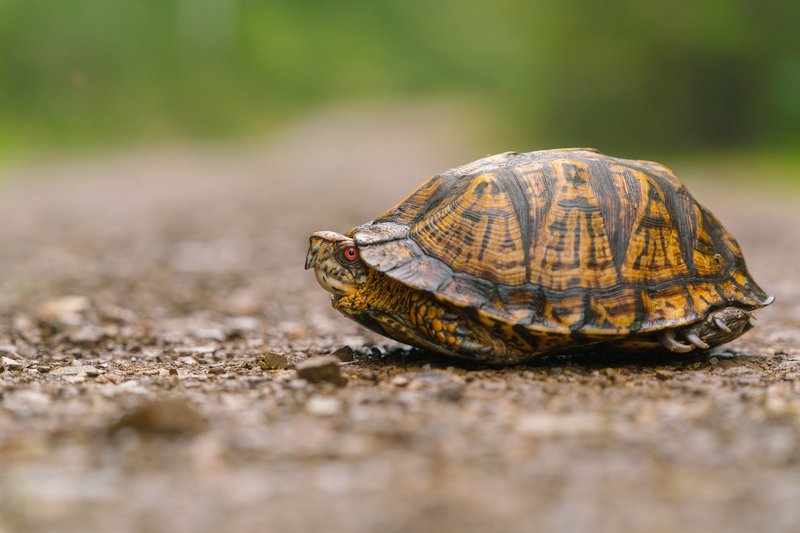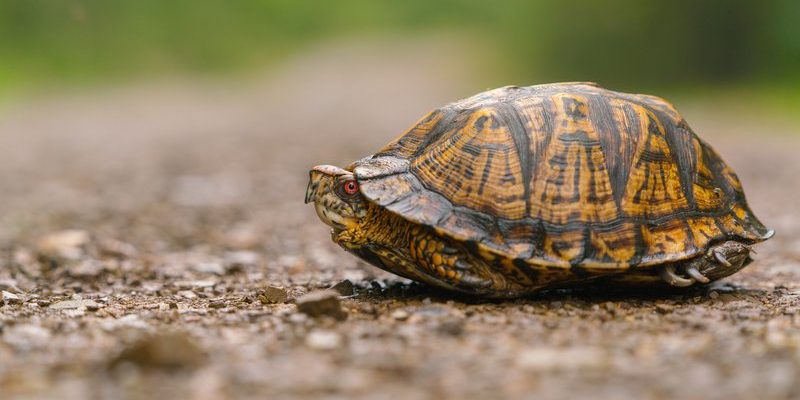
You might not have realized it, but box turtles are quite the survivors. They can live for decades—some even reaching over a hundred years! However, their survival is under threat from things like habitat loss, pollution, and diseases. Imagine a beloved old bookstore being demolished to make way for a parking lot. That’s a bit like what’s happening to the box turtle’s home. In this article, we’ll explore the status of the box turtle, what makes them special, and the conservation efforts in place to help protect them.
What is the Box Turtle?
Box turtles belong to the family Emydidae, and they’re known for their unique hinged shells, which allow them to completely close up inside for protection. There are several species of box turtles, but the Eastern Box Turtle is the most recognized. These turtles have vibrant, patterned shells with colors ranging from brown to orange. They can be found in woodlands, grasslands, and gardens, making them adaptable little creatures.
A common misconception is that all turtles are the same. But box turtles prefer dry land and often seek refuge in moist environments, like leaf litter and soft soil, while many other turtle species spend their lives in water. This could be one reason why their populations are declining: they don’t thrive in the same environments as other turtles, making conservation efforts a bit more challenging.
Are Box Turtles Endangered?
Yes, box turtles are considered threatened in many areas. In the United States, certain species, like the Eastern Box Turtle, are facing significant declines. Factors such as habitat destruction, road mortality, and illegal pet trade contribute to their status. Their slow reproductive rate means that even small losses can have big impacts on populations. Here’s a quick breakdown of why they’re endangered:
- Habitat Loss: Urban development and agriculture are reducing their natural habitats.
- Road Mortality: Many box turtles are hit by cars while crossing roads.
- Pet Trade: Some people collect box turtles for pets, further decreasing their numbers in the wild.
With their populations dwindling, it’s crucial to understand what’s at stake and how we can help.
Challenges Facing Box Turtles
Box turtles face several hurdles that make their survival tricky. One of the biggest challenges is habitat loss. As cities expand and forests are cut down, these turtles lose their homes. It’s like trying to find shelter in a city where all the apartments are being torn down. Without suitable places to live, they struggle to survive.
Another major issue is road mortality. Many box turtles venture onto roads in search of food or mates, only to find themselves in danger of cars. Sadly, a significant number of box turtles end their journey this way. Plus, their slow reproductive rate means they can’t bounce back quickly from losses. If too many are killed, the population can’t recover, and that’s alarming.
Then there’s the illegal pet trade. Some people think it’s cool to keep a box turtle as a pet, but this can have disastrous effects on wild populations. When turtles are taken from their natural habitats, it disrupts the ecosystem and makes it even harder for them to thrive in the wild.
Conservation Efforts for Box Turtles
Fortunately, there are dedicated conservation efforts aimed at protecting box turtles. Various organizations work tirelessly to create awareness about their plight. Conservationists are actively working to restore habitats that have been lost to development. This involves planting native vegetation and creating protected areas where box turtles can live safely.
Education plays a significant role, too. Many groups are focused on teaching the public about the importance of box turtles and what we can do to help. For example, programs in schools and communities highlight how to be responsible pet owners and the dangers of collecting turtles from the wild. By spreading the word, more people can understand why it’s essential to protect these remarkable creatures.
Moreover, scientists are conducting research to better understand box turtle populations and their needs. This research helps inform effective conservation strategies. By studying their habits and habitats, conservationists can develop targeted plans to help boost numbers and create safer environments.
How You Can Help Box Turtles
You might be wondering, “What can I do to help box turtles?” The good news is that there are many ways you can get involved. Here are some simple actions you can take:
- Spread Awareness: Talk to your friends and family about the challenges box turtles face.
- Report Sightings: If you see a box turtle, report it to local wildlife organizations. They can use that information to track populations.
- Drive Safely: Be cautious when driving, especially in areas where you know turtles might cross.
- Support Conservation Groups: Consider donating to or volunteering with organizations that focus on turtle conservation.
These small actions can create a ripple effect, leading to significant changes for box turtles and their habitats.
The Future of Box Turtles
While the future may seem uncertain for box turtles, there is still hope. Conservation efforts are making strides, and with more awareness and support, these fascinating creatures can thrive again. Imagine a world where box turtles roam freely in their natural habitats, crossing paths with adventurers like you and me. That’s a future we can work towards together.
As we learn more about the challenges facing box turtles, let’s keep the conversation going. Every effort counts, whether it’s educating ourselves or taking action to support conservation. By working together, we can help ensure that these remarkable turtles don’t just survive, but thrive for generations to come.
In conclusion, understanding whether the box turtle is endangered highlights the importance of our natural world. It’s a reminder that even the smallest creatures deserve our attention and protection. Together, we can make a difference—one tiny step at a time.

